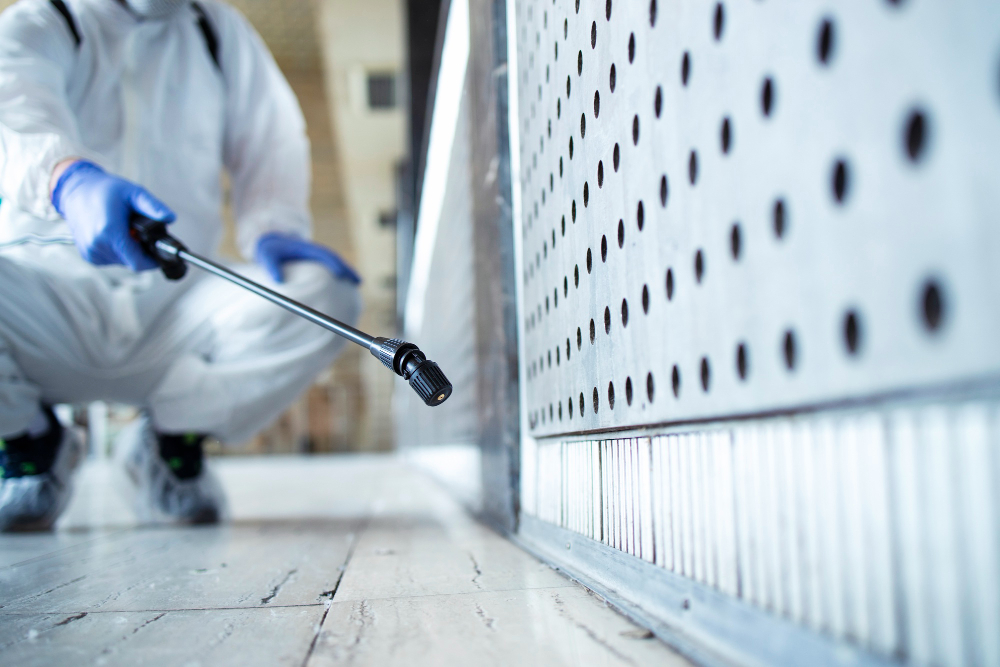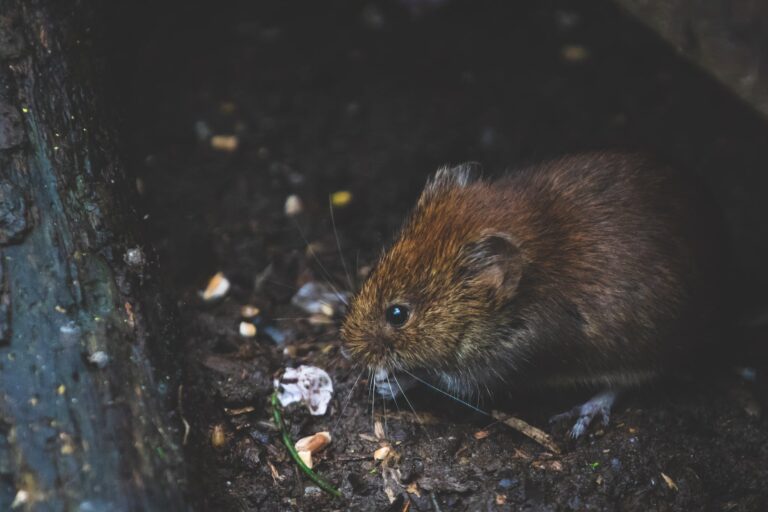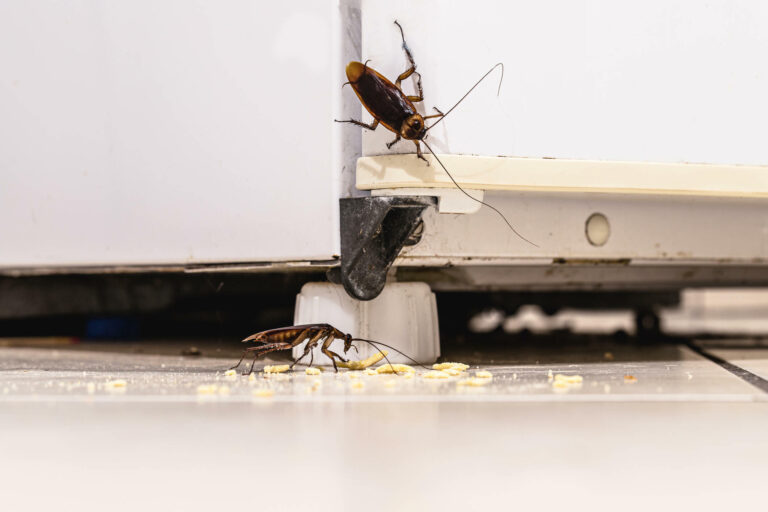Child and Pet Safe Pest Control: Best Practices for Families
Are pests taking over your home, causing chaos and havoc for your family? Don’t worry, you don’t need to resort to extreme measures or harmful chemicals to keep them at bay.
In this guide, we’ll show you the best practices for child and pet safe pest control. Say goodbye to creepy crawlies without putting your loved ones at risk!
We’ll explore natural remedies that are both safe and effective, as well as tips for creating a pest-free environment.
Learn how to store and dispose of pesticides responsibly, and discover what to look for when hiring professional pest control services.
Plus, we’ll teach your children and pets about pest safety, so everyone can live in harmony.
Identifying Common Household Pests
To effectively address pest problems in your home, it’s important to start by identifying the common household pests that may be causing the issue. By knowing which pests you’re dealing with, you can implement the most appropriate and effective pest control methods. Some of the most common household pests include ants, cockroaches, spiders, rodents, and bed bugs.
Ants are small insects that are attracted to food sources in your home. They leave trails of pheromones that lead other ants to the food, causing an infestation.
Cockroaches are nocturnal creatures that thrive in warm and moist environments. They can contaminate food and surfaces with their droppings and can trigger allergies and asthma in some individuals.
Spiders are beneficial in controlling other pests, but some species can be dangerous. Brown recluse and black widow spiders, for example, have venomous bites that can cause serious health issues.
Rodents, such as mice and rats, can cause damage to your home by chewing on wires and spreading diseases through their droppings.
Finally, bed bugs are small, reddish-brown insects that feed on the blood of humans and animals, causing itchy bites and sleepless nights.
Identifying these common household pests is crucial to effectively control and eliminate them from your home. Once you know what pests you’re dealing with, you can take the necessary steps to keep your home pest-free.
Understanding the Risks of Traditional Pest Control Methods
When using traditional pest control methods, it’s important to be aware of the potential risks involved. While these methods may be effective at eliminating pests, they can also pose a threat to the health and safety of your children and pets.
One of the main concerns is the use of toxic chemicals in traditional pest control products. These chemicals, such as insecticides and rodenticides, can be harmful if ingested or even if they come into contact with the skin. Children and pets are more vulnerable to the harmful effects of these chemicals due to their smaller size and developing immune systems.
In addition, traditional pest control methods often involve traps and baits that can be a hazard for curious children and pets. They may accidentally get caught in the traps or ingest the baits, leading to injuries or poisoning.
It’s crucial to take precautions and follow safety guidelines when using traditional pest control methods to minimize the risks to your family. Consider using alternative, child and pet safe pest control methods to ensure the well-being of your loved ones.
Natural Pest Control Remedies: Safe and Effective Options
Looking for natural pest control remedies that are safe and effective for your family? When it comes to keeping your home free from pests, there are several natural options that you can try. These remedies aren’t only safer for your children and pets, but they’re also effective in getting rid of pests without the use of harmful chemicals.
One natural pest control remedy that you can use is vinegar. Vinegar is known to repel ants, spiders, and other insects. Simply mix equal parts of vinegar and water in a spray bottle and spray it around areas where pests are commonly found, such as windowsills, doorways, and kitchen countertops.
Another effective natural remedy is diatomaceous earth. This powdery substance is made from fossilized remains of tiny aquatic organisms and is harmless to humans and animals. Sprinkle diatomaceous earth in areas where pests are present, such as cracks, crevices, and along baseboards. The sharp edges of the powder will cut through the pests’ exoskeleton, causing them to dehydrate and die.
Essential oils, such as peppermint, lavender, and eucalyptus, can also be used as natural pest control remedies. These oils have strong scents that repel pests, including mosquitoes, ants, and flies. Mix a few drops of your chosen essential oil with water and spray it around your home or apply it to cotton balls and place them in areas where pests are likely to be present.
Creating a Pest-Free Environment: Prevention Is Key
To create a pest-free environment and protect your family and pets, it’s important to focus on prevention as the key strategy. By taking proactive measures, you can significantly reduce the chances of pests invading your home.
Start by maintaining a clean and clutter-free living space. Pests thrive in dirty and untidy areas, so regularly clean your home, sweep the floors, and vacuum carpets. Make sure to store food properly in airtight containers, as pests are attracted to open food sources.
Seal any cracks or gaps in your walls, doors, and windows to prevent pests from entering. Additionally, keep an eye on your garden and yard. Trim bushes and trees to keep them away from your house and remove any standing water, as it can attract mosquitoes and other pests.
Regularly inspect your home for signs of pests, such as droppings or chewed wires, and address the issue promptly. By implementing these preventive measures, you can maintain a pest-free environment for your family and pets.
Safe Storage and Disposal of Pesticides and Insecticides
Ensure the safe storage and disposal of pesticides and insecticides to protect your family and pets. Proper storage and disposal of these hazardous substances is crucial in preventing accidental exposure and potential harm. To start, store pesticides and insecticides in their original containers, tightly sealed and out of reach of children and pets. Keep them in a locked cabinet or a high shelf, away from food, drinks, and other household items.
When it comes to disposal, never pour pesticides or insecticides down the drain or throw them in the trash. This can contaminate water sources or harm wildlife. Instead, check with your local waste management facility for guidelines on how to properly dispose of these chemicals. They may have specific drop-off locations or collection events for hazardous waste. Follow their instructions carefully to ensure safe and responsible disposal.
If you have leftover pesticides or insecticides that you no longer need, consider donating them to a local organization or community garden that can use them responsibly. This helps minimize waste and reduces the risk of accidental exposure.
Hiring Professional Pest Control Services: What to Look for
When hiring professional pest control services, you should regularly inquire about their experience and certifications to ensure you’re choosing a qualified and reliable provider. Experience is crucial because it indicates that the company has dealt with various pest problems and knows how to handle them effectively. Inquire about the number of years they’ve been in business and if they’ve experience in dealing with the specific pest issue you’re facing.
Certifications are also important as they demonstrate that the company meets industry standards and has undergone proper training. Look for certifications such as the National Pest Management Association (NPMA) certification or state-specific certifications. These certifications show that the company follows safe practices and uses environmentally friendly pest control methods.
In addition to experience and certifications, it’s essential to consider the company’s reputation. Read online reviews and ask for references from previous clients. A reputable company will have positive reviews and satisfied customers who can vouch for their services.
Furthermore, it’s advisable to inquire about the pest control methods used by the company. Ask if they offer child and pet-safe pest control options and if they use organic or chemical-free products. It’s important to prioritize the safety of your family and pets when choosing a pest control service.
Lastly, consider the company’s customer service. A reliable provider will be responsive, answer your questions, and provide clear communication throughout the process. Choose a company that values customer satisfaction and provides guarantees for their services.
Teaching Children and Pets About Pest Safety: Education and Awareness
As you educate your children and pets about pest safety, it’s important to continue the conversation from the previous subtopic by discussing the potential risks and precautions associated with pests in your home.
By teaching your children and pets about pest safety, you can help them understand the importance of being aware and cautious around pests. Start by explaining the potential dangers that pests can pose, such as bites, stings, and the spread of diseases. Emphasize the importance of not touching or approaching pests, as well as the need to keep food and garbage properly sealed to prevent infestations.
Teach your children and pets to recognize common pests, such as ants, spiders, and mosquitoes, and to avoid them when possible. Show them how to identify signs of pest activity, such as droppings or chewed materials, and encourage them to notify an adult if they spot any signs.
Additionally, educate your children and pets about the importance of regular pest control measures, such as keeping a clean and clutter-free home, sealing cracks and crevices, and using pet-safe pest control products. By empowering your children and pets with knowledge and awareness, you can help create a safer and pest-free environment for your family.
Safe and Sound: Prioritizing Family and Pet Safety in Pest Control Practices
So remember, when it comes to pest control, the safety of your children and pets should always be a top priority. By understanding the risks of traditional methods and opting for natural remedies, creating a pest-free environment, and properly storing and disposing of pesticides, you can ensure a safe and healthy home for your family.
Additionally, consider hiring professional pest control services that prioritize the safety of children and pets. Education and awareness are key in teaching your little ones and furry friends about pest safety.







